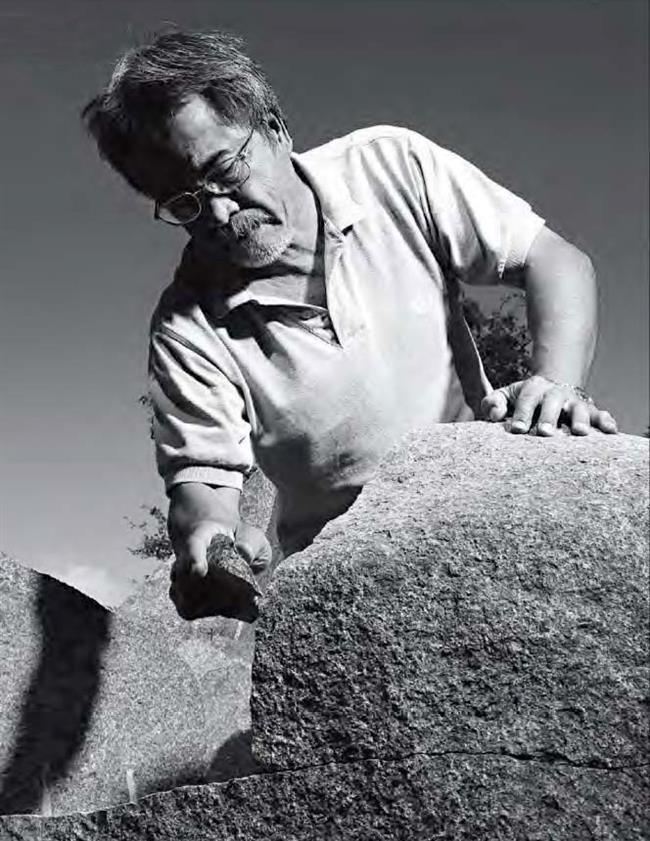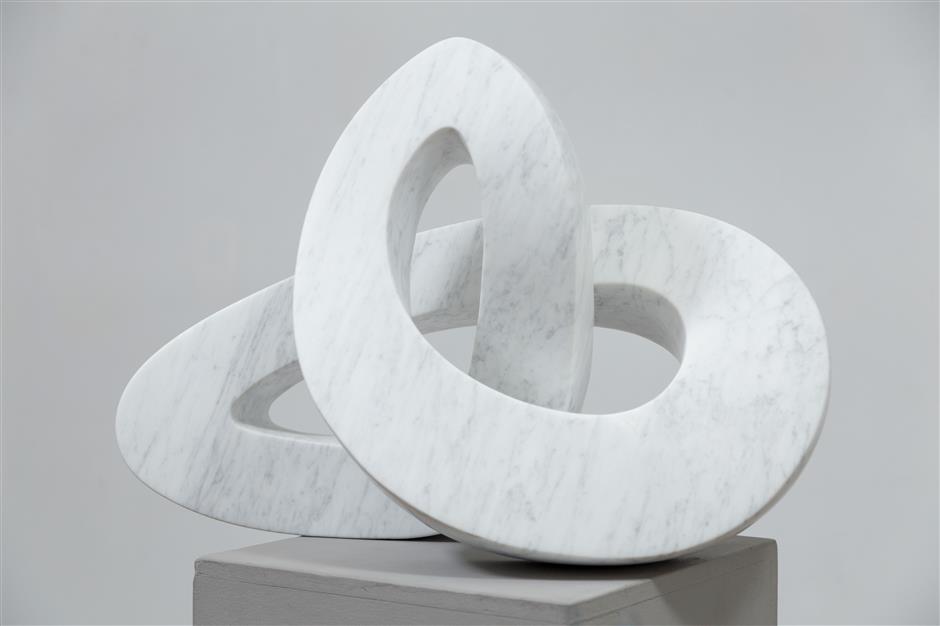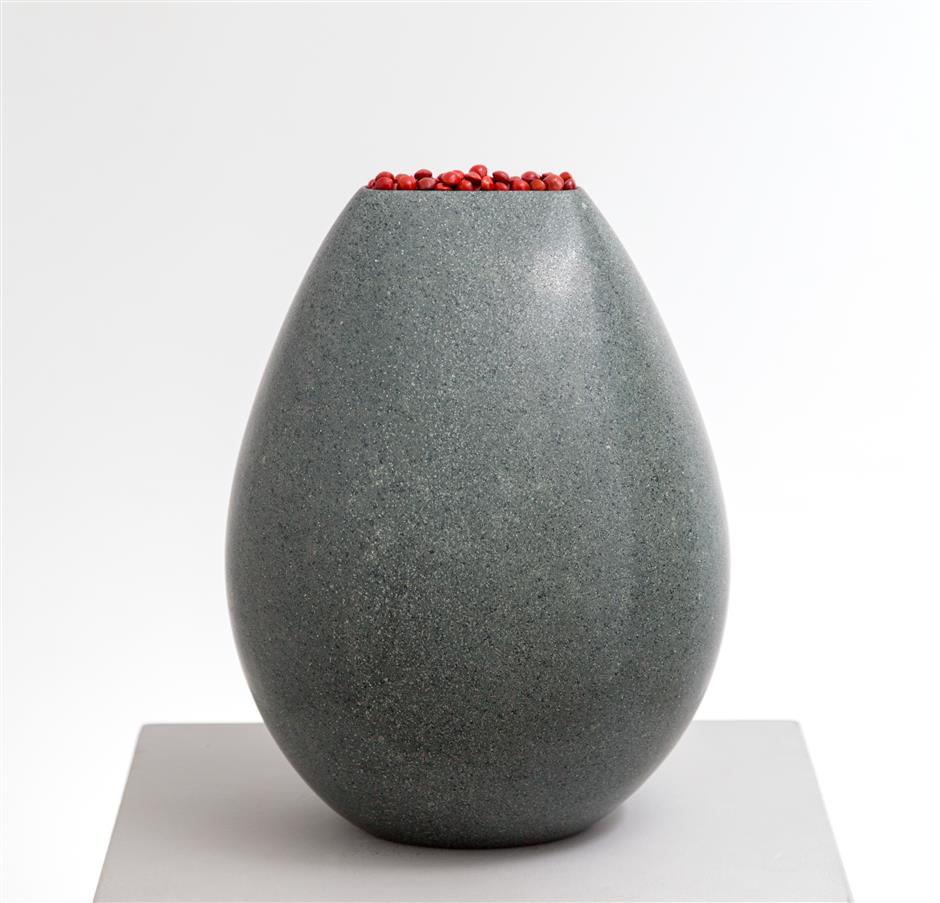Esteemed Hong Kong artist presents first solo show on Chinese mainland

"Shape of Mountain," granite, resembles the Chinese character of mountain, or shan (山).
In Shanghai, it is not easy to find a solo sculpture exhibition, so Lai Chi Man’s “Harmony, 2018 Sculpture Exhibition” is a welcome addition to the city’s cultural haven.
The exhibit, currently underway at Longmen Art Project (Suite 102, 338 Nanjing Road W.) through the end of June, features some of Lai’s latest sculptures. It is his first solo exhibition on China’s mainland.
Born in Hong Kong in 1949, Lai graduated from the sculpture department at Taiwan Art Academy. He then traveled to Italy where he refined his sculpture-making skills at Henraux SpA, Carrara, famous for its quarries and sculptures.
After four years in Italy, Lai received a fellowship to further studies in Wyoming, the US, under sculptor Robert Russin and got his Master of Fine Arts degree in sculpture from the University of Wyoming.
In 1984, Lai returned to Taiwan where he is teaching at the Taipei University of Arts. Having lived in different countries and regions, Lai was able to foster a rich and diverse perspective on aestheticism.
He is always seeking ways of expression for individual style through the contrast of textures and concepts.
On first inspection, Lai’s sculptures are quite abstract in geometric forms, but these forms are not randomly obtained, they are derived from his pondering toward ancient Chinese culture.
The roots of his sculptural vocabulary can be traced to the six ways of constructing Chinese characters, whose forms echo the cultural virtues of an ancient tradition and reflect the essence of Eastern thoughs. For example, his work “Shape of Mountain” resembles the Chinese character of mountain, or shan (山), yet in a more profound and abstract form.
Through such approach, Lai contemplates Eastern philosophy on the relationships between mankind and nature, and throughout the creative process he uses pictographs similar to those found in Chinese characters to express a message that transcends culture with universal value.
Q: As a sculptor, what kind of material do you prefer, hard or soft? Why?
A: I always use a “direct method” in creating sculptures, and that is carving. For me, carving is a method of “minus.” I prefer to use stone and hardwood as raw materials, removing the parts I don’t want and keeping those I need. The sculpture carved from stone or wood is unique.

Sculptor Lai Chi Man is holding his first solo exhibition on Chinese mainland in Shanghai.
Q: You went to Henraux in 1973. How did such experience influence your later creations?
A: Upon graduation in Taiwan, I furthered my studies in Italy and was introduced by a friend to work at a stone-carving studio in Henraux in Tuscany. The marble there is renowned for its pure white hue, which is perfect for figure sculptures.
During my stay at the studio, I learned profound carving technique and communicated with many artists from different countries. I was impressed by their works with distinctive characteristics.
I realized that I was deeply rooted in the Oriental culture. So I decided to study the shapes of the ancient Chinese jade and the six ways of constructing Chinese characters.
Q: During your stay in Henraux, you met Henry Moore, Isamu Noguchi and Pietro Cascella, all heavyweight names in the field of sculpture. What was your impression of them?
A: I worked in Henraux for four years, and during that time Henry Moore was in his 70s. He and his wife preferred to go to Tuscany in summer to enjoy sunshine and the Mediterranean Sea. Usually he would go into his studio with a stick to check the plastic models done by his craftsmen.
Isamu Noguchi, however, rarely visited Henraux because he had his own studio in Japan. Once he came to my studio and had a dinner with me and some other young artists had dinner with him at a small restaurant. He was a kind, curious and friendly man.
Pietro Cascella had a small stone studio there. Sometimes he assembled large stone sculpture there. He is a robust man and not so easy to approach. But his sculptures are filled with force and mass.
Q: Can you further explain your sculptural vocabulary, which is said to be inspired by the six ways of constructing Chinese characters?
A: When I was working in Henraux, I met with different artists whose works were strongly stamped with their own cultural background. Then as a Chinese artist who had received Western art training, I started to ponder my Chinese cultural roots.
I was interested in the six ways of constructing Chinese characters, such as pictographs which represent the relationship between man and nature, man and man, as well as man and universe. I tried to reflect the Oriental philosophy and culture through the principle of Chinese characters.
Q: The same sculpture, if cast in a different size, usually has a different visual effect. So is size an important element in your work?
A: Sure. Sculptures in different sizes render a different visual impact on viewers. Although in the same shape, those small sculptures may only have a display function. But bigger sculpture is utterly different. It directly conjures up a certain relationship with its environment.
So when I am making a sculpture, I must consider the size. In my eyes, some materials are suitable for small sculptures, and some for big ones.
The color and texture are also important in choosing the materials.

"Eternity," marble

"Between," granite and acacia
















